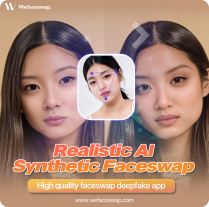Understanding the Technology Behind Face Swap Features
Understanding the Technology Behind Face Swap Features
Blog Article
The Evolution of Face Swap and Its Rising Popularity
The transformation of face exchange technology from the trendy novelty to a popular trend is nothing short of fascinating. Originating as a fun filtration on early photograph apps, face trades have today become an intrinsic section of social networking material creation and actually qualified industries. Using its rapid progress and rising recognition, deepfake (딥페이크) technology has captivated thousands worldwide. Tools like Experience Trade have performed an important role in this trend, offering sophisticated and innovative experience sharing practices that are an easy task to use.

Deepswap is just a cutting-edge serious learning engineering that allows for high-quality experience trades with just a few clicks. It employs artificial intelligence (AI) methods to analyze face features and effortlessly replace them with yet another person's. It has opened an environment of creative possibilities, allowing users to generate jaw-dropping visible consequences and distinctive content. Let's examine some of the exciting jobs you can make with Deepswap.
The Early Days of Face Trade
Experience trade engineering first appeared in the first 2010s with fundamental photo-editing apps. These early iterations were usually clunky, providing funny but glitchy results that fueled their appeal solely as entertainment. Customers could swap encounters with buddies, pets, or even celebrities, sharing these hilarious pictures on social media platforms. While basic, this entry-level engineering opened the door for developers to examine their untapped potential further.
Growth Forced by Cultural Media
Quickly forward to the mid-2010s, and the increase of applications like Snapchat and Instagram catapulted experience swaps into main-stream culture. The thing that was when limited by fixed photographs was now being transformed in to real-time movie filters. FaceSwap, Snapchat's renowned lens, became one of their most popular characteristics, participating an incredible number of people daily. Studies declare that by 2016, about 60% of Snapchat people had tried their face change feature at least once.
Concurrently, social media marketing influencers started adopting face trades for material formation, heightening wedding through imagination and humor. This growing trend further cemented the technology's existence in common culture, planning beyond leisure and emerging as a robust instrument for storytelling.
Advanced Technology and Broader Programs
Today, developments in artificial intelligence (AI) and equipment learning have enhanced face change methods, making them more accurate and convincing than their predecessors. Deepfake engineering presents the cutting-edge realm of experience sharing, allowing hyper-realistic overlays of just one experience onto another. Beyond leisure, professional areas like filmmaking, advertising, and even electronic education have embraced these innovations.

As an example, in 2021, studies suggested that almost 15% of digital marketers were tinkering with AI-driven video personalization applying advanced experience swaps. This shift demonstrates how experience swap technology is crossing into practical purposes, encouraging its increasing popularity.
A Tendency on the Increase
Why is experience swaps evergreen is their availability and adaptability. As a result of mobile-friendly programs driven by AI, anyone can test out face trades without complex expertise. Whether for lighthearted enjoyment or skilled use, the expansion of this engineering suggests extended growth.
From their humble origins as a photo-editing uniqueness to its modern-day programs in AI and marketing, face change engineering has changed remarkably. With more developments coming, that tendency is set to keep up their reputation for a long time to come.
Report this page